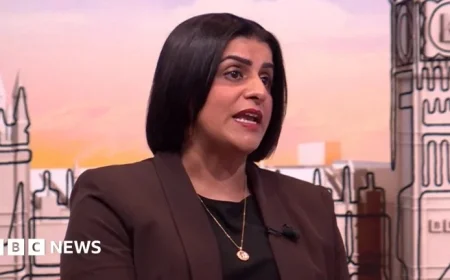Malala Speaks Out: How a Virtuous Heroine Image Was Constructed Around Me That I Didn’t Recognize
Malala Yousafzai, the young Nobel laureate, opens up in her new memoir, “Finding My Way.” This book reflects her journey of self-discovery, shaping her public persona amidst public expectations. The 28-year-old, who survived an assassination attempt by the Taliban in Pakistan at just 15, shares her insights and experiences.
Understanding the Virtuous Heroine Image
Malala identifies a disconnect between her true self and the image crafted by the media. After waking from a coma following the Taliban attack, she describes how others defined her as an inspiration and a hero. She recalls the surprise she felt at being depicted as a shy girl, contrary to her lively childhood in Mingora.
- Malala’s childhood included wrestling with her brothers and aspiring to be a car mechanic.
- She notes the absurdity of her virtuous image created by others.
Confronting the Past
Seven years after the attack, Malala experienced her first flashback while at college after experimenting with marijuana. This led to panic attacks and an awakening of traumatic memories. Seeking help from a therapist revealed she was dealing with post-traumatic stress disorder (PTSD) and anxiety.
The Role of Therapy
Initially skeptical about therapy, Malala discovered its value in processing her emotions. Regular therapy sessions became crucial for her healing process. She emphasizes the importance of normalizing mental health conversations, especially for those struggling with similar issues.
Transformation at Oxford University
Malala’s college experience at Oxford marked a significant change in her life. Determined to avoid her lonely high school experience, she joined various societies. This involvement helped her rediscover her former self, fostering connections with others who shared her heritage.
The ‘Relationship Guru’ Persona
Malala became known among friends for her advice on relationships, despite never having dated. Drawing insights from Bollywood movies, she constructed an understanding of love and dating dynamics. This role provided a humorous element to her life as she navigated her academic and personal identity.
Candid Reflections on Love
Amidst her activism, Malala initially avoided romantic relationships. However, her encounter with Asser Malik, a cricket executive, changed that. She describes falling in love with him, highlighting the universal nature of love and vulnerability.
Visiting Her School in Pakistan
Earlier this year, Malala returned to the school she helped establish in Shangla, Pakistan, using her Nobel Prize funds. The school is a testament to her dream for girls’ education in her homeland.
- This year, over 30 girls graduated from high school.
- Some students are pursuing computer science and teaching.
- A mental health office on campus represents a progressive step in the community.
Malala’s return revealed the resilience of the students and the progress made in girls’ education. She celebrates the shift towards normalizing mental health discussions, particularly in rural areas of Pakistan.
Malala Yousafzai’s memoir not only chronicles her journey but also aims to inspire others by sharing her truths. Through her experiences, she hopes to encourage more conversations about mental health and personal identity.
































